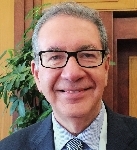
Liu Minxia
mllmx@msn.com
Security of both collections and visitors have been in unprecedented focus among Tunisian museums after a terrorist attack on the Bardo National Museum in the Tunisian capital city of Tunis in March 2015 that left 24 people dead, including 20 foreign tourist, according to a Tunisian museum director.
Tahar Ghalia, director of the museum section of the National Institute for Heritage, said the attack was a warning to museums around the world to rethink their security strategy in contemporary times.
“You have this big problem of security. Any museum and scenic site can fall victim to attacks,” he said. “It’s a problem worldwide.”
The attack dealt a huge blow on the northern African country’s pillar tourist industry and tourism revenues throughout the country fell by about a third last year.
All the museums and scenic sites in Tunis have installed security systems following the attack, according to Ghalia. The Bardo museum, housed in an Ottoman palace with one of the largest collections of Roman mosaics, has decided to leave intact most traces of the deadly attack to send warnings.
Museums don’t follow any prescribed standards for security worldwide. In fact, the one document adopted by the American Association of Museums starts out by noting that it’s a set of “suggested practices,” not standards.
Editor: Jane Chen